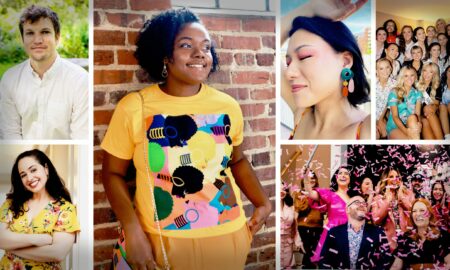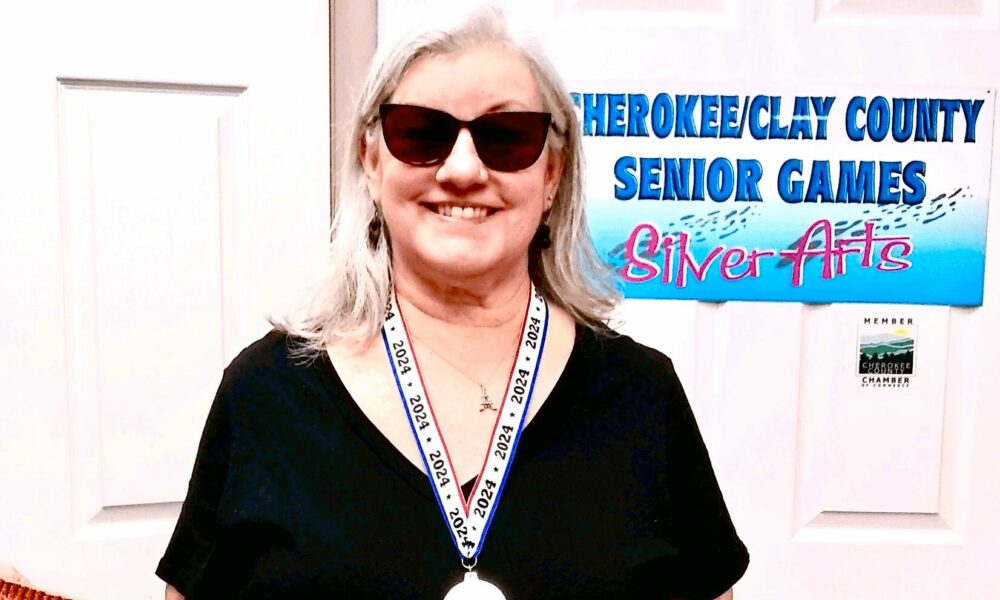

Today, we’d like to introduce you to Pamela Palma.
Hi Pamela, please kick things off for us with an introduction to yourself and your story.
I started messing with yarns and threads and cloth before I ever started kindergarten. I was completely enthralled watching the women in my mother’s family – my aunts, grandma, and mom – whip up beautiful things from a ball of fluff. It was magic.
They taught me to knit and hand sew, and I was off and running! Over the years, I expanded my repertoire to include machine sewing, crocheting, and embroidery. I made things to decorate my bedroom. I made boho shoulder bags (before that was a thing) embroidered with bright flowers and yarn. I bought commercial sewing patterns and designed wardrobes for my little sister and myself – I was 13. I designed and knit my own tennis sweaters in colors of my choice, without a pattern.
Throughout my life, I have always had a sewing machine nearby, as well as a basket of yarn and knitting needles and embroidery projects. In college, I studied fine art. I learned to weld metal sculptures, throw pots on a wheel, draw, and paint. My textiles were still close at hand. Eventually, I gave up welding and pottery in favor of fiber art because I realized I love soft mediums and textiles are very forgiving. And I could have pretty fingernails.
In my mid-30s, I earned a degree in Design with a focus on Fiber Art and Fashion. The curriculum included weaving, which was new to me (not counting 1,000 potholders when I was 8). I unexpectedly discovered that I am totally in synch with the techniques of weaving, especially on complex floor looms. That was nearly 40 years ago, and I have not stopped weaving in all these years.
I still enjoy a bit of knitting, embroidery, and crochet now and then, and I love to design and sew my own apparel. Basically, I prefer to have things that no one else has which carries over into all of my textile designs. I make things no one else is making because I believe we are all unique, and we all deserve to have things that reflect our uniqueness.
I’m sure it wasn’t obstacle-free, but would you say the journey has been fairly smooth so far?
Textiles are finally coming around in the art world as a bona fide art form. Textiles have long been considered women’s work – as if that makes it less valuable.
We all need clothes, blankets, towels, rugs, etc., which historically have been made by women. Happily, that value system is shifting. Women – and our work – is to be celebrated.
Thanks – so, what else should our readers know about your work and what you’re currently focused on?
The beauty of weaving is that there are endless ways to weave, infinite patterns to use, and countless types of yarns. Every culture has a tradition of weaving going back to before recorded history, each devising looms and materials that suit their environment.
I weave on two different types of floor looms, each powered entirely by me. I use traditional weaving patterns as my starting points, often morphing them into my own designs. I do not use a computer to plan out my designs or my color arrangements. I visualize what I want and then go for it.
Looms are actually the precursors to computers, so setting up a loom to make a particular color and pattern is basically a set of ones and zeros. Weaving patterns are essentially pixelated codes. Instead of typing commands on a keyboard, I physically insert threads or yarns into certain slots on my looms.
By depressing various pedals on the floor looms, I can raise and lower threads to weave into them, thus creating the design as a physical, colorful entity. I greatly prefer a tangible result for a day’s work. It is magic to weave, to see the cloth develop before my eyes, to admire it off the loom, and to be able to say, “I made this!”
My textile art is strongly influenced by my environment in terms of color choices and materials. I work in two directions – one being functional objects like table linens and wearables. The second leans toward conceptual mixed-media wall art. I like to include unexpected materials with my yarns, and in so doing, I weave social commentary.
I want viewers to think about the meaning of ordinary things and how things affect our lives.
Can you talk to us about how you think about risk?
Social commentary is a risky business. There are political implications, value systems, and societal conditioning – things we may take for granted as being normal until we become aware that maybe what has been acceptable is not so cool.
The risk involved is potentially alienating clients. But art is a means of communication, and I want my art to evoke meaningful change.
Contact Info:
- Website: www.pamelapalmadesigns.com
- Instagram: Pamela Palma Designs
- Facebook: Pamela Palma Designs
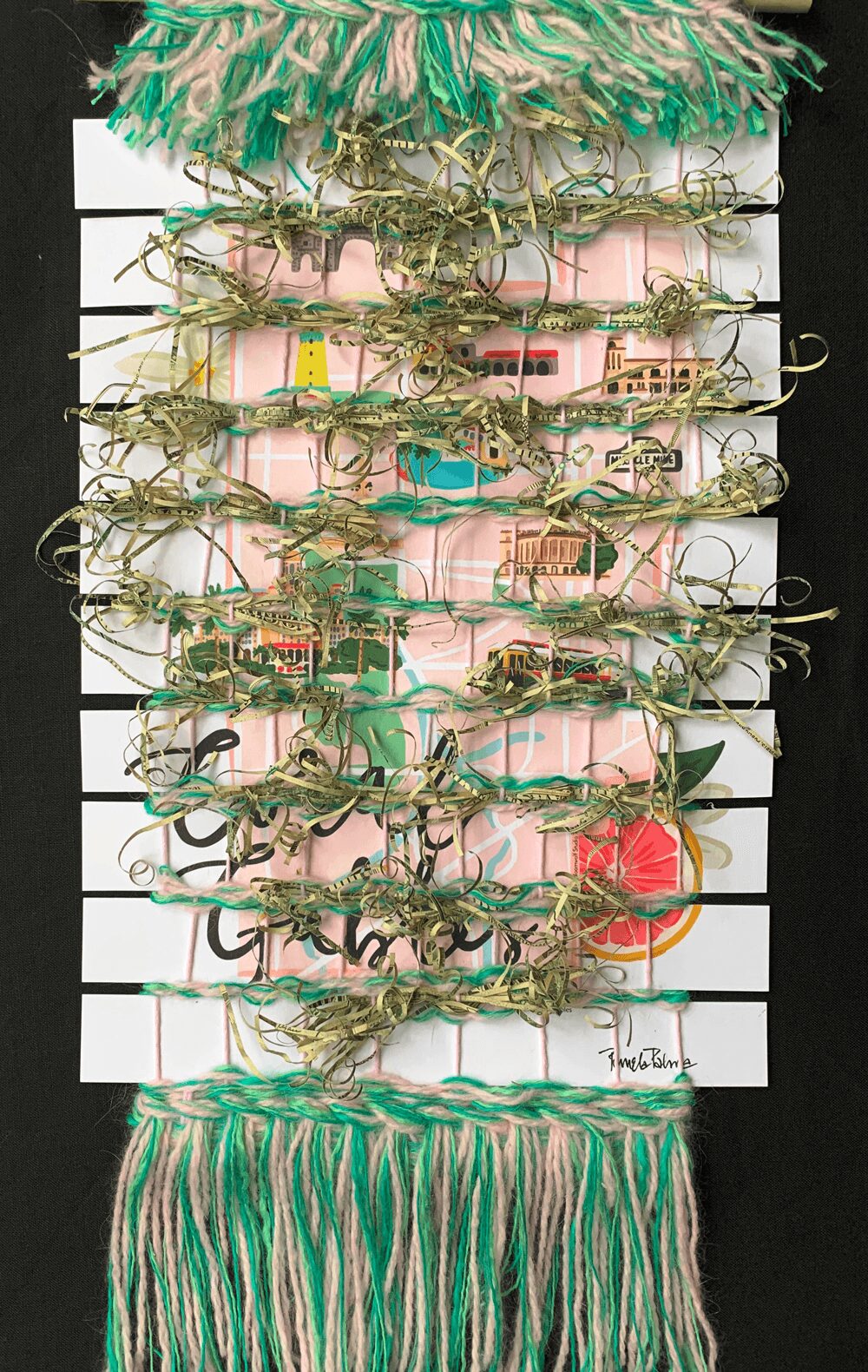
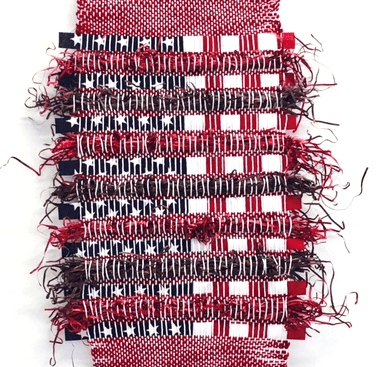
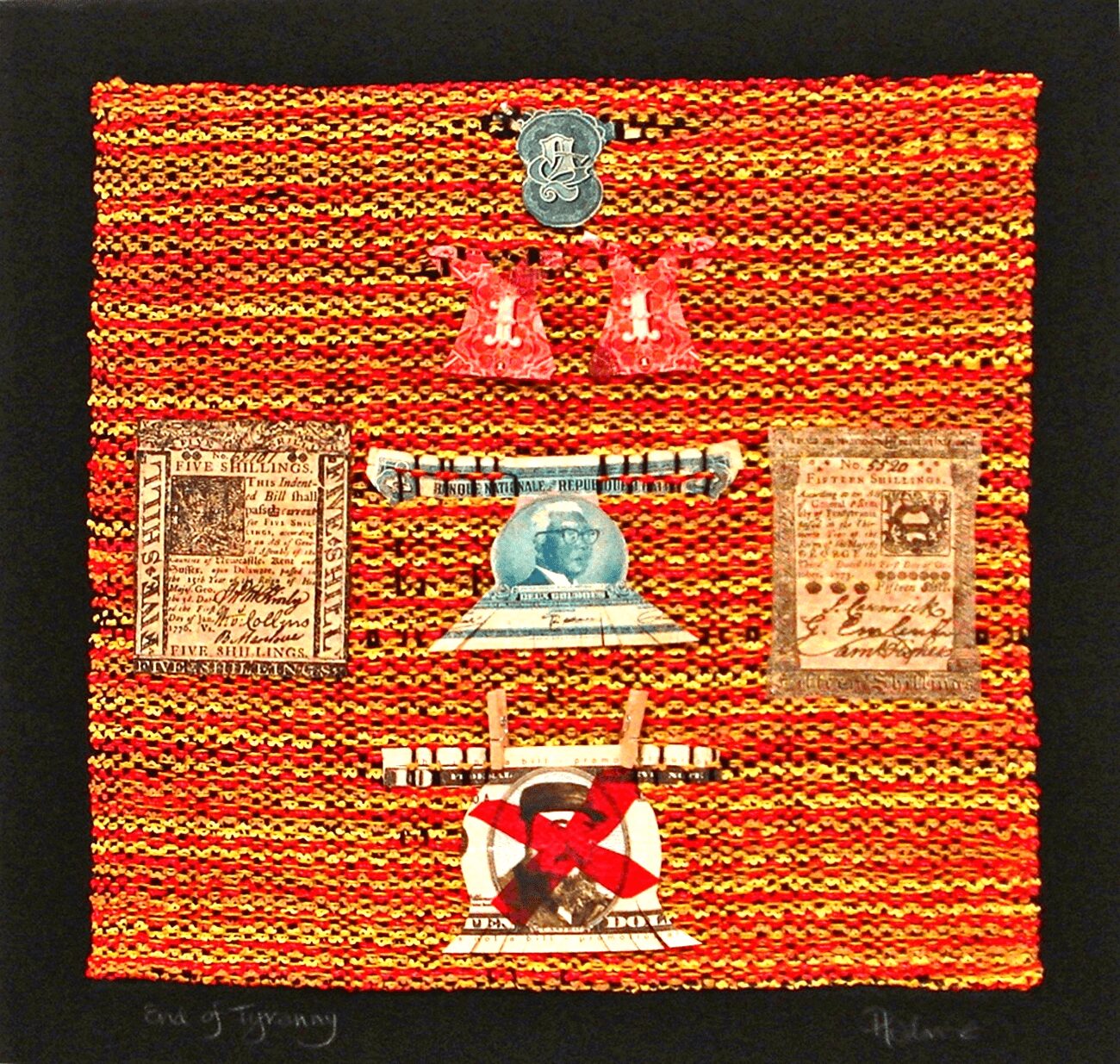
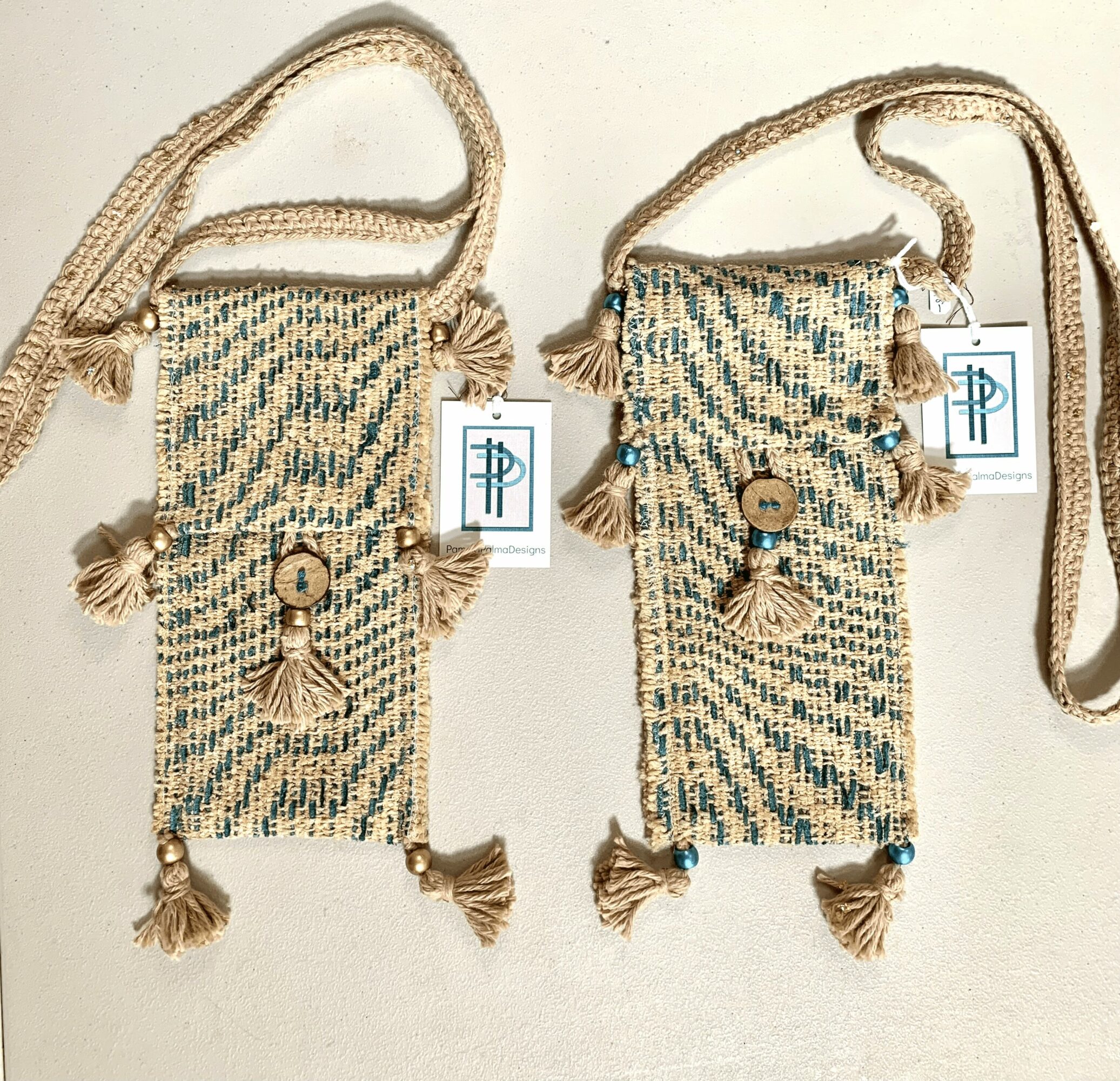
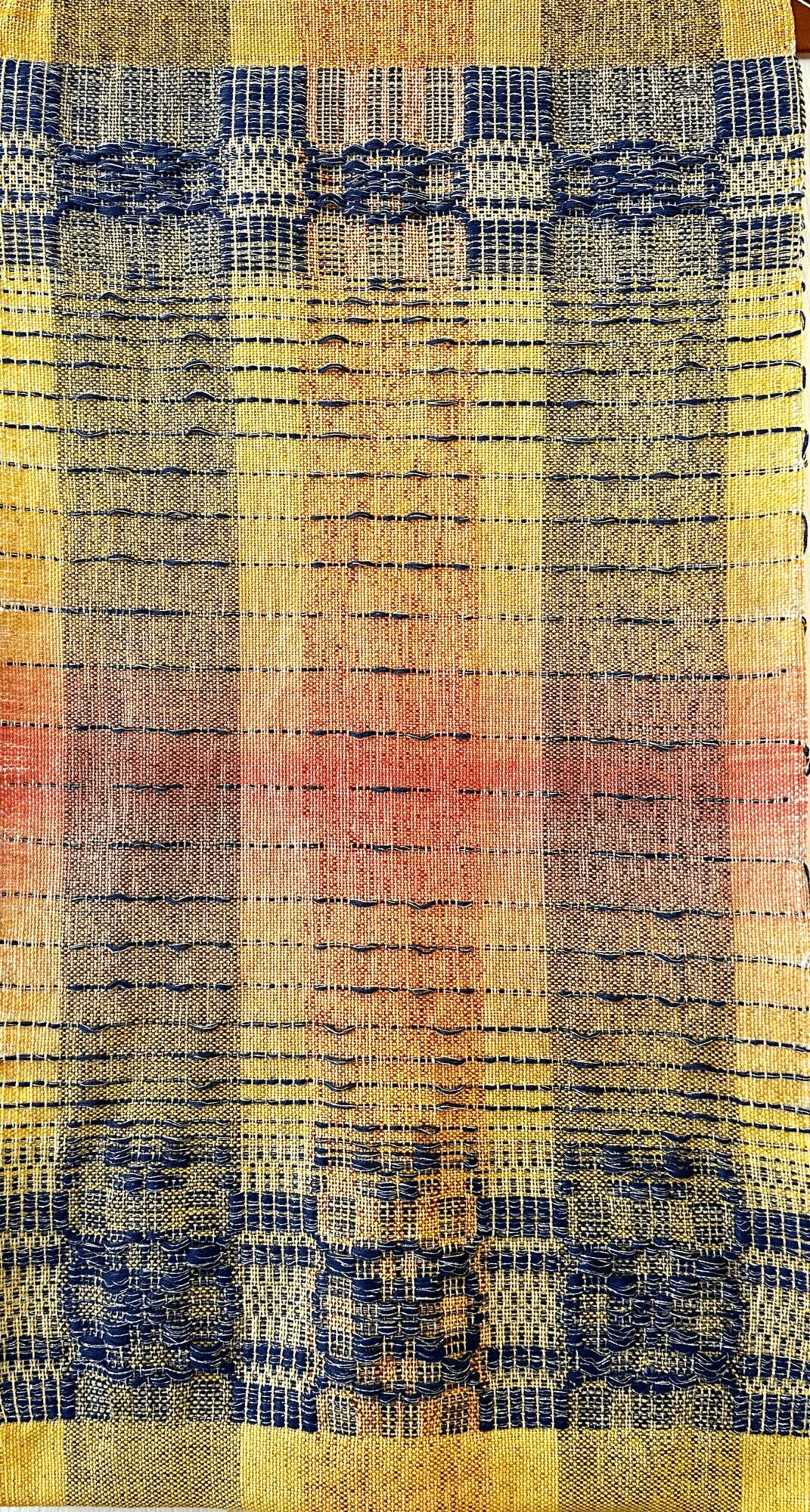 Image Credits
Image Credits
Silver Arts Award, Chris Faries 2024, Pamela Palma, and End of Tyranny

